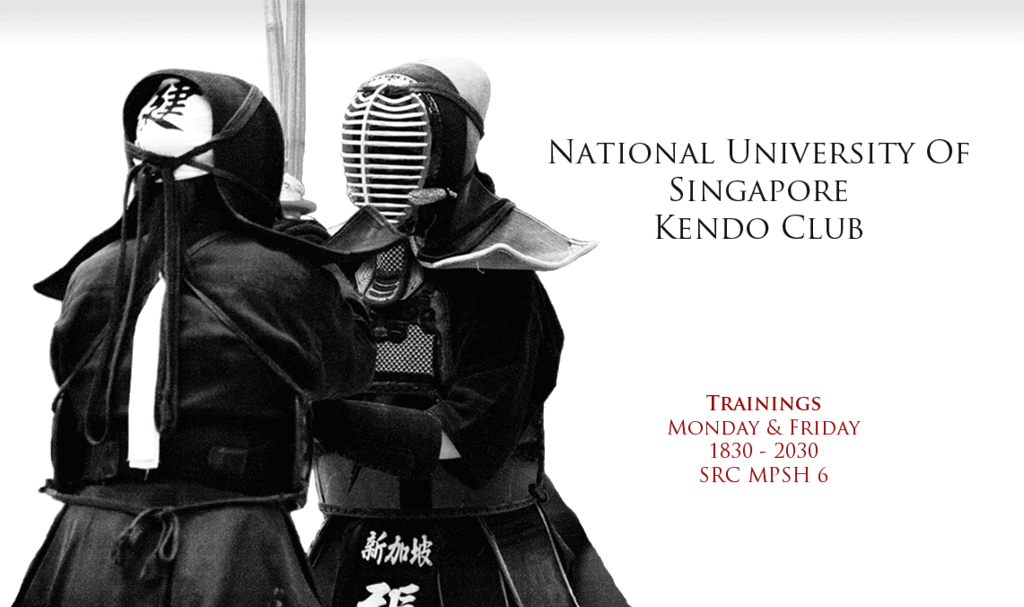For the coverage of this event, we hereby interview several of our members on their experience during Series 3!
Firstly, our Men's Eliminations 1st-runner up winner, Hai Hsian, shares with us his experience.
HAI HSIAN
In his first match against current club captain Yong He, Hai Hsian was nervous for two reasons:
1. He had just recently returned from his SEP trip, and had no proper chance to spar with Yong He prior to the match,
2. He knew that Yong He’s kote cuts would have improved significantly following AKT training.
Hai Hsian was also determined not to lose this first match because it would be a waste of his $4 contact lenses!
When he successfully managed to hit and score a men point, he felt that his men practices were showing some result. However, within a short period of time, Yong He managed to retaliate with a strong kote cut, leaving Hai Hsian stunned.
The fierce cheers of encouragement from the club members gave him the motivation to keep fighting, and he remembered what Peter-sensei said once: “As long as you are determined to win, the possibility of you doing so remains.”
Throughout the match, Hai Hsian was aware that kote-nuki-men was quite effective against Yong He, but he didn’t want to restrict himself to using only that technique since it would be exploiting Yong He’s weakness. However, near the end of the match, when Yong He decided to target his kote again, Hai Hsian instinctively reacted swiftly with a kote-nuki-men, thus ending his first match and putting one of the favorite contenders out of the game!

Hai Hsian VS Jack
During the next match against Jack, Hai Hsian wanted to have a good match that he would not regret. He remembered that a year ago against Jack, Peter-sensei had commended them on their battle for their intent to fight each other face-on, as fiercely as they could. As Hai Hsian had heard that Jack’s new ‘skills’ were dangerous, he was eager to see how he would fare.
Since Hai Hsian had been focusing on his men cuts before the tournament and used mostly men and dou cuts, he successfully prevented Jack from using his favorite kote–nuki-men technique.
For his third match against Nickolas, Hai Hsian resolved to go all out and to perform beyond his limit, especially since it would take him to the Finals. Although Hai Hsian tried many hiki-dou cuts on Nickolas, he was not awarded any points for them. Still, he was determined to try to execute a successful hiki-dou. After his first successful point, he lost a 1-cut-1-point-kote to Nickolas, which made him stay on guard. Taking more careful consideration of his distance (ma-ai), Hai Hsian narrowly won his second point by cutting men, moving through quickly and showing strong spirit!
In the finals, Hai Hsian was up against Chee Fung. Having fought with Chee Fung quite frequently, Hai Hsian’s cuts were hesitant as he knew Chee Fung would be going for his men if his cut missed. Against Chee Fung, Hai Hsian knew his hiki-wazas would not be effective: their frequent encounters during training keikos would most likely have familiarized Chee Fung with his hiki style and the technique he would execute. Thus, Hai Hsian was restricted to using forward cuts on him.
Although the match ended with Chee Fung emerging victorious, Hai Hsian felt that he had learnt valuable lessons from the match about how he could improve; besides, managing to get so far in the tournament was already a good sign that his training is paying off.
As Peter Sensei once said:
"Kendo's not about winning or losing. It's about the amount of fighting spirit you display."

Chee Fung, Hai Hsian & Jing Yang sorting scores
--
We next interview Jing Yang. Some of you may remember what happened to Jing Yang and Shannon in the previous tournament series... by some sick incredible fate, the two rivals are set to duel... AGAIN!
JING YANG
When Jing Yang found out that that he would have be matched up with Shannon AGAIN for the first match, he was shocked! Never in his wildest imagination did he think that this would happen after the previous long and epic match with Shannon. He dreaded his match with Shannon as he knew Shannon was a hard opponent. Furthermore, he was hoping that he would be able to fight with someone from his own year instead as he hadn't gotten a chance to since the past 3 tournaments.

Jing Yang and Shannon hard at battle
Although Jing Yang managed to pull off a successful hiki-dou within the first minute of the match, Shannon guarded carefully any subsequent dou-cuts Jing Yang tried to do. Unfortunately, Jing Yang then made a few mistakes in distance judgement, costing him 2 hansokus (fouls committed for being out of play-area), which gave Shannon 1 point.
After entering enchou (sudden death), his hiki-dou techniques that he tried to execute once again cost him 2 hansokus, hence awarding Shannon with yet another point and putting an end to the match.
Poor Jing Yang! Be careful never to forced out of the playing area again--a costly mistake for any kendoka!
--
Nasution & Nickolas
We now interview Nasution & Nickolas about their first experience in our club's internal tournament.

Nasution VS Nickolas
Having recently joined us this academic year, the ex-NYP Kendo Club members only had such tournaments during camps and before major kendo events such as YKT, Nationals and AKT. As they had not the chance to keiko with us from NUS, it was like a true shiai experience: they did not know their opponents playing styles, and vice-versa.
By some sick incredible fate, the two friends found themselves matched up against each other!
Of course, they knew each other’s fighting style well enough, and they both rivalled each other equally, so it was once again a battle to outwit, outsmart, and outplay each other on the tournament grounds.
Overall, the pair commented that the internal tournament series was a fresh and eye-opening experience!
--
Here are some quick excerpts from our interviews with some of our juniors from the Beginner's Course about their experience watching their very first shiai!































